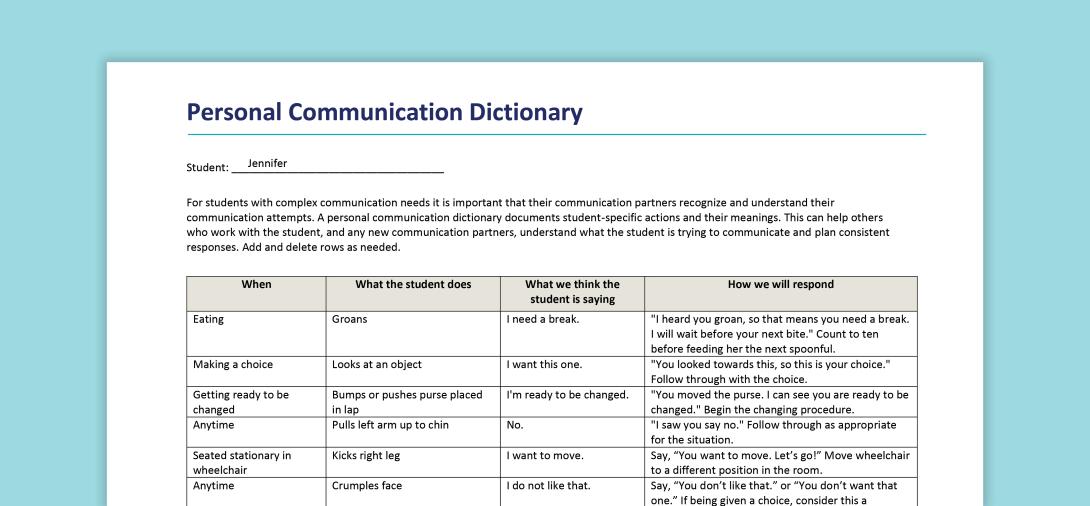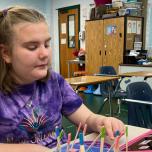Personal Communication Dictionary
For students with complex communication needs it is important that their communication partners recognize and understand their communication attempts. A personal communication dictionary documents student-specific actions and their meanings. This can help others who work with the student, and any new communication partners, understand what the student is trying to communicate and plan consistent responses.
To create a personal communication dictionary, people who know the student well will observe and describe behaviors in multiple settings, determine what the student is trying to communicate, and agree upon a consistent staff response.
Personal communication dictionaries should be reviewed and revised regularly, based on data, as an individual’s communication behaviors can change.
This document aligns with the Rubric of Effective Practices for Students with Significant Cognitive Disabilities Quality Indicator V: Social Communication and was designed to accompany the Connecting Communication and Instruction for Students with Complex Access Needs training.
Related Content
Significant Cognitive Disabilities,
Assistive Technology,
Instruction
Learning Objectives: Define communication and establish the importance of teaching communication skills. Demonstrate the relationship between communication and behavior. Review considerations in developing and acquiring communication systems. Investigate student response modes. Explore strategies
Significant Cognitive Disabilities,
Instruction
Learn to work with students with no authentic academic response, creating PLAAFPs, goals and implementing best practices for academic growth.
Significant Cognitive Disabilities,
Behavior,
Instruction,
Assistive Technology
Support students with complex access needs by fostering belonging, enabling communication, and promoting choice-making opportunities.
Significant Cognitive Disabilities,
Behavior,
Instruction,
ARD/IEP Supports,
Inclusion
This rubric highlights best practices to facilitate learning for students with complex access needs. The document should be used as a guide by a campus/district team as they engage in reflection of their current practices and plan for program growth (T-TESS Dimension 4.2). To aid administrators in
Significant Cognitive Disabilities,
ARD/IEP Supports,
Instruction,
Assistive Technology,
Behavior,
Inclusion
This document provides administrators with best practices to facilitate learning for students with the most complex access needs and the evidence that they should see if practices are implemented.
Significant Cognitive Disabilities,
Instruction,
Assistive Technology
Explore the key themes from Quality Indicator V: Social Communication in the Rubric of Effective Practices for Students with Significant Cognitive Disabilities.







